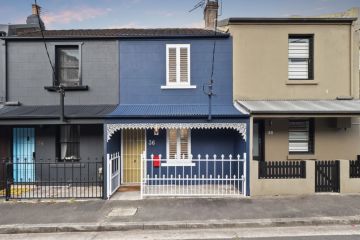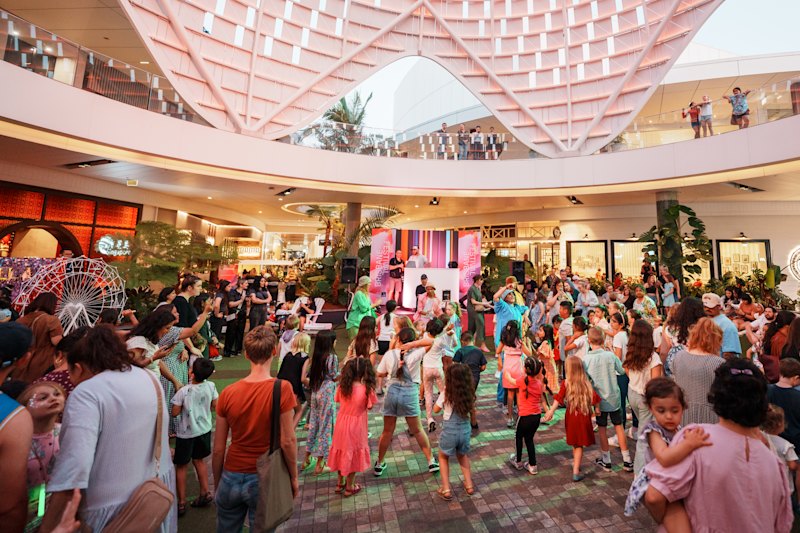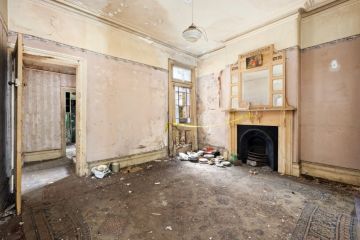The rise of street art in the home

Sure, it’s been popularised recently on prime time renovating show The Block, however street art has been creeping into the home for some years now.
Humans have been making marks where they aren’t allowed for as long as there has been open surfaces and the means to do it. There is something deliciously illicit and thrilling for a street artist in seeing their signature work in the public domain – and knowing others are seeing it too. Once representing an unrelenting blight on the urban landscape – the contemporary eye is gaining a genuine appreciation for this style of work. Even councils, who for so long waged war against troublesome taggers, are now commissioning this style of work in prominent neighbourhood precincts.
No one person better represents our shifting attitude than elusive British graffiti master and provocateur Banksy. From ‘bombing’ walls in Bristol in the 1990s, his work now commands hundreds of thousands of dollars in auction houses around the world. The once bourgeois world of art now comes without a mandatory qualification, and has moved out of the gallery and into the street.
When Woollahra interior designer Melissa Collison began renovating her own Darling Point apartment, she was challenged by what to do with an entrance space that was too small for furniture but too large to leave empty. And in her trademark statement-making way – she turned to graffiti.
“I wanted something fun and edgy and spirited,” says Collison, whose entrance now features a large, colourful mural by Sydney artist Shannon Crees. Collison began collaborating with graffiti artists in many high-end private homes across Sydney a number of years ago.

Elliott Numskull Routledge – commissioned mural for private home.
Elliott ‘Numskull’ Routledge is an Australian-based contemporary artist, who has managed to transcend his roots in street art, crediting his dabblings in graffiti as a bored, skateboarding kid as being formative. For over 15 years, Elliott has been creating public murals locally and abroad – as well as highly collectible works on canvas. Increasingly, Elliot is asked to create his trademark mural works in private homes.
“The type of clients I usually do private murals for are either artsy collector types, designers or people who have a particularly boring wall that’s just too big for paintings,” says Routledge. “Most of the time they have come to me for my aesthetic, but maybe have specific colours in mind, other times they have a message or concept they would like to be incorporated. I’m down for whatever, as long as it’s true to my style.”
When asked why he thinks this kind of work seems to be gaining popularity, he says it may be because street and mural art is more accessible, and featured more in mainstream media, than it once was. “People maybe see the impact it has outside in the streets and want that same energy in their own private space,” he explains.

Claire Nakazawa ‘Willow’ for private home.
Claire Nakazawa is a fine arts graduate known as much for her murals as her popular gallery exhibitions, and is finding herself increasingly in demand for private mural commissions thanks to word-of-mouth. “It seems to be anyone who enjoys the arts and the creative process wanting something unique in their home… musicians, stylists, photographers and ‘open-minded’ types,” she says. “I think it is an enjoyable process for them as well – watching the artwork unfold.”
So, how does one get started? “I first ask about colours, atmosphere and if there is any particular imagery they want. It’s also good to get an idea of the client’s character and style,” Nakazawa explains. “I love it when the owner tells me the style and vibe they like and then I’m given free reign – the artwork ends up being spontaneous – and I find that provides the best results!”
Matt Rabbidge is the man behind Mild Manners, a gallery platform showcasing alternative contemporary art from the fringes, where artists and the work they produce often sits comfortably in the space between high and low culture groups. Rabbidge provides some context for the growing acceptance of these new art forms.

Section of mural in Interior Design Melissa Collison’s foyer.
“Put simply, I’d say it’s a natural progression for the art form of a generation,” he says, dividing street art into two categories. “The first are from a core graffiti background and will always define themselves as such – you’ll rarely see this group make a transition into gallery walls. The second is a far broader group – their work spreads across illegal graffiti, ‘permission walls’, public art projects, commissioned walls and of course exhibitions. This art exists in a parallel world to the traditional commercial and institutional realm,” he explains, listing some of the notable artists who have well and truly blurred the lines in Australia, such as Stanislava Pinchuk (Miso), Anthony Lister, Mark Whalen (formerly Kill Pixie) and Reko Rennie.
Rabbidge further notes that painting large scale murals has now become a business in its own right – with councils and private companies paying big money to have artists paint walls with the aim to fast track the cultural significance of some areas, in particular old laneways. It seems only natural that the growing presence of this work in our public spaces would rub off and influence the aesthetic of our private quarters.
We recommend
We thought you might like
States
Capital Cities
Capital Cities - Rentals
Popular Areas
Allhomes
More
- © 2025, CoStar Group Inc.







